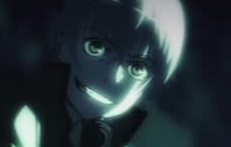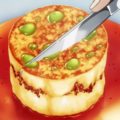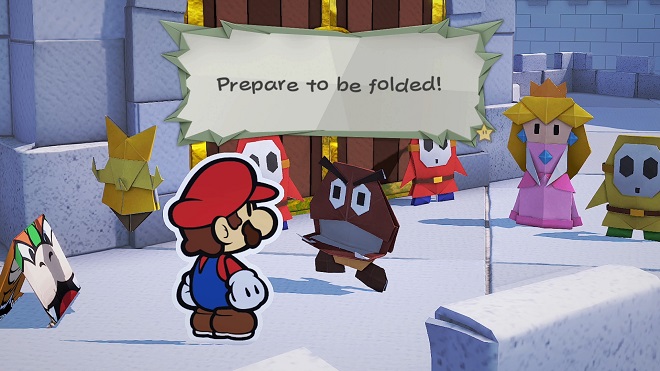Rule by Rigidity: Akame ga Kill

“Oh, I’ll eventually get around to finishing it up.” Repeat this phrase for 6 years between watching the first and final episodes and you have pretty much summarized my experience with the series “Akame ga Kill.” Sure, it was highly regarded back in the day- for instance, there was a DVD release with a limited edition boxset. However, the one thing I distinctly remember was that many people regarded it as a very violent show. With a little (all right maybe a lot) more free time now because of lockdowns and cancelled conventions, my focus has shifted back to anime I had been putting off for some time. So, how well does “Akame ga Kill” hold up to the test of time?
Well, its reputation as a violent show certainly was apparent from the getgo, as “Akame ga Kill’s” bloody and violent nature was apparent from even the first episode and set the tone for the rest of the series. The main male character Tatsumi is cookie-cutter average mixed with a too heavy dosage of happy-go-lucky sweetness, but the mood gets a one-two sucker punch at the end. The next several episodes revolve around the rest of the series’ main characters, as Tatsumi’s dream of becoming an honorable soldier to bring wealth and honor to his impoverished hometown gets derailed once the true corrupt nature of “the Empire” is revealed by the assassination group “Night Raid.” Things get even more derailed when Tatsumi is “asked” to join Night Raid and support their noble cause: a coup d’état and assassination of those in the corrupt “Empire.” It’s a great smooth start to the series that quickly draws the viewer in and captures your attention.
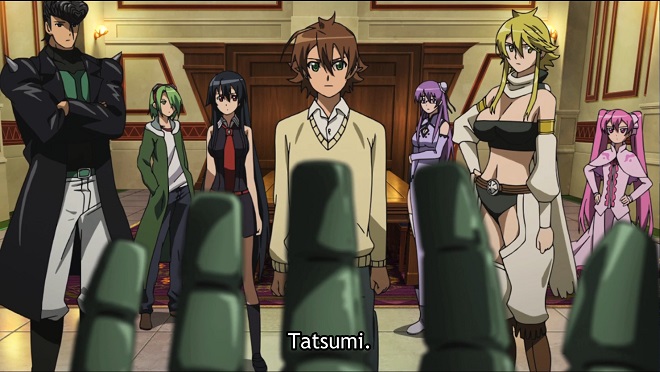
Now, the members of Night Raid are colorful and their personalities multidimensional, but here the problems begin to arise. The characters’ multifaceted personalities are not integrated well at all, and just seem to be several different personalities badly stapled together in an attempt to create depth and complexity. It is much too apparent when a character shifts from one personality aspect to another; the transition is jerky and rough. The series does seem to get going at a steady pace, with relatively good development and quite interesting weapons of choice for the characters, called “imperial arms.” When battles do take place, Night Raid’s members display excellent battle prowess and teamwork, though early on in the series, one gets the distinct impression that the battles are a bit anticlimactic and the amount of action relatively minimal. One thing that the series does well is the balance of power between Night Raid and opposing members of the Empire, with loss a central theme and each side possessing imperial arms of equal strength. However, this is where another problem arises. The series still trundles along at the same pace, as if on cruise control, rather than slow down to at least let the death sink in beyond a brief grieving period and verbal acknowledgement of the late character’s legacy. Character chemistry is adequate, though still feels more like a combination of separate parts, as if team cohesiveness were not dependent on any one character, and dialogue is little more than basic. Losing a team member doesn’t seem to make the team function any differently in terms of strength or tactics, lessening the inherent value from each team member. While each layer builds upon one another, “Akame ga Kill’s” conversation pieces stack but don’t really congeal into one cohesive unit. The scenery colors and drawings are average, with a cohesive design and reasonable light and shading, at least. It’s nothing over the top, but not much to write home about either.
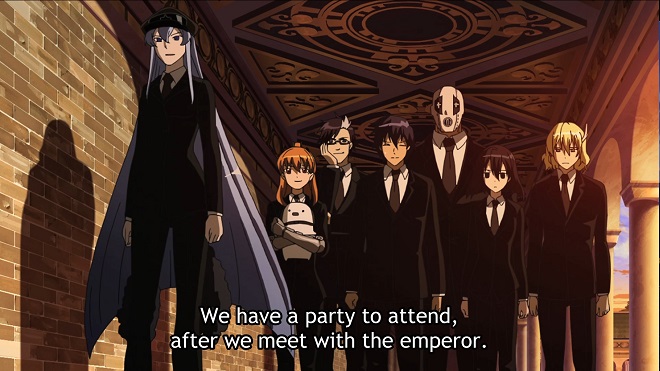
As the series progresses and more elements get introduced, the overall feeling of “win some, lose some” continues. The best example of unrefined and forced character complexity is the Empire’s General Esdeath, as the integration of her romance life is blatantly tacked on and contrasts horribly with her extreme battle prowess and her “the strong rule the weak” life philosophy. In fact, many of the characters on the Empire’s side suffer from very stunted and lackluster development, mostly from over-simplification and single-track mentality. This is extremely prevalent in the young, naïve and totally subservient “Emperor” figure and his advisor, the gluttonous and greedy “Honest.” Other examples of underdeveloped characters on the side of the Empire’s Jaeger team include the half-baked and promising character Run, and perhaps the worst-developed character in the series, the bland and simple-minded butt-monkey Wave. However, Night Raid don’t escape from this flaw either, as the later introduced Susano’s stoic nature and excellent all-around abilities is tainted by boxy dialogue and a too-poker-face mentality, though this can be somewhat excused given his role in the group. At least battles in the second half of the series are much more intense and slightly more complex in nature, with some fantastic action and choreography plus excellent use of skills. The characters are able to truly shine in these moments, and both taking advantage of one’s own abilities plus nullifying the abilities of one’s opponents are used, resulting in some truly awe-inspiring battles even if the animation was still kept to a minimum and is relatively simplistic.
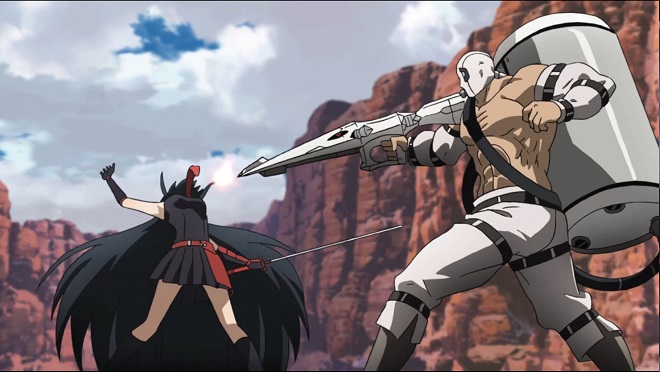
However, despite the second half of “Akame ga Kill” having improved battles, the flaws from the first half of the series still were not entirely resolved. Characters are slightly more fleshed out and the horribly stapled-together multifaceted personalities start becoming slightly better integrated, while adding on a backstory to certain characters also provides a little more depth. However, characters are still treated as quite disposable, with personalities that still allow them to come off as too raw and sharp. Character development throughout the series is steady but oftentimes comes across like one is skipping steps along the way. Linear as the plot may progress, battle prowess, especially with Tatsumi, is done in enormous and ungainly steps. The simple-mindedness and lack of character development for the Emperor and Honest become much more problematic and annoying as the intensity of the rebellion starts to crescendo, and while the members of Night Raid do show more complexity and development, it is limited, with the series having missed many opportunities to have gone the extra mile and just offer more. The result is a set of characters who you want to love but most of them are at most just likeable, even by the time you reach the series’ end. While arrived at mostly steadily and very conclusive in nature, the final battle nonetheless suffers from too-predictable elements and cheap shots, lacking sophistication from the usage of intelligent strategy or hard-earned skills. The finale also suffers from a too-stoic mood, again still not taking the time to mourn or recognize the lives of characters who died fighting for a better life and less corrupt political system.

Now, I may come across as too negative and harsh on “Akame ga Kill,” but overall I got out of it what I could. The characters are quite interesting despite their development being flawed and their chemistry and dialogue unsophisticated. The battles got much better as the series went on, and the animation is adequate enough to not come across as cheap. The plot is steady and develops linearly, even if the pacing is stuck at one speed, perhaps the core of the problem. It’s a series that’s too focused on rigid structure and form at the detriment of natural grace and movement, an unwavering military march that does not deviate from procedure, precision, and form. It is the result of a team or person more focused on exact timings and rigid design by rulers rather than the grace of a penstroke. While the series feels like the head honcho’s first rodeo, I do have faith in this person’s future works given a few more works under his or her belt, as the basic elements of a good series are there, but need finer tuning. “Akame ga Kill” is not a series I would regulate to the dustbin of history or the back shelf of a closet but instead a very good introductory series to beginning anime fans and a palatable series to those who have been in the fandom a bit longer. Try it on Crunchyroll first before committing to the discs, however.

